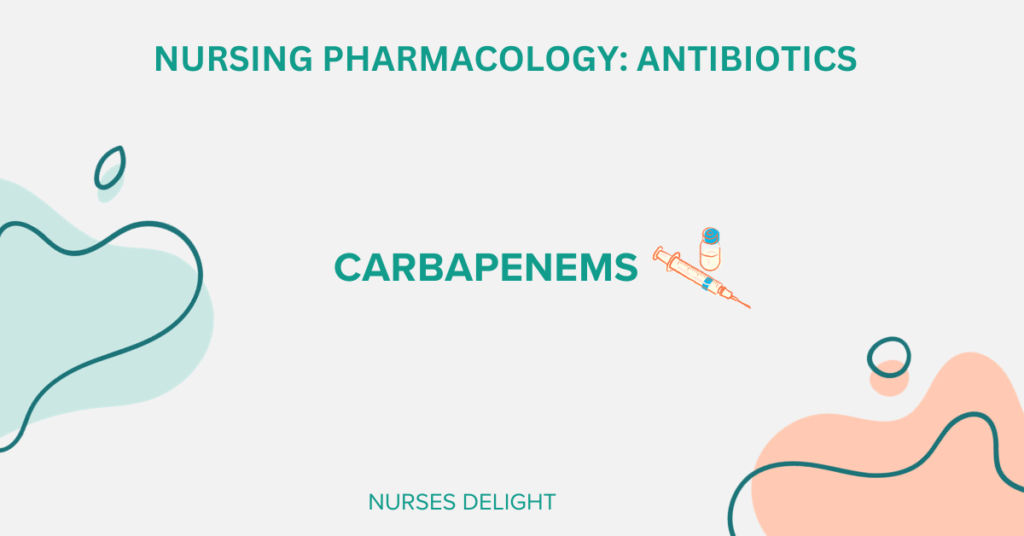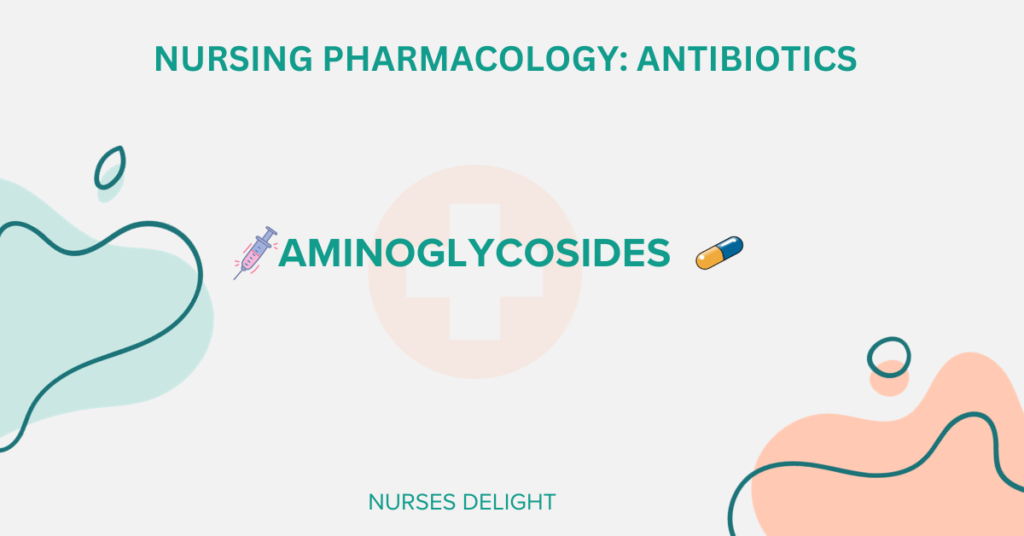Carbapenems are broad spectrum antibiotics that are mostly used in cases of severe infections. They are mostly given via injections and are sometimes used concurrently with aminoglycosides since they are synergistic.
They include;
- Meropenem
- Ertapenem
- Imipenem-cilastatin
- Doripenem
Imipenem is mostly combined with cilastatin and/or relebactam (non-antibiotics drugs) because they protect it from being broken down.
Pregnancy Category: B
Animal studies have not shown any harmful effects of carbapenems to the fetus. Their used is discouraged in lactation as they crosse the breast milk and can affect the normal flora of the baby’s GIT.
Mechanism of Action
They are bactericidal. In susceptible organisms, they kill bacteria by inhibiting cell wall synthesis.
Indications
- Imipenem is used to treat infections caused by Streptococcus, Staphylococcus aureus, and Staphylococcus epidermidis, Enterobacter species, Pseudomonas aeruginosa and Bacteroides fragilis. It may be used to treat infections in immunocompromised patients such as HIV patients.
- Meropenem is used to treat intra-abdominal infections and bacterial meningitis caused by susceptible organisms.
- Ertapenem is used to treat community acquired pneumonia, intra-abdominal, skin, urinary tract, and gynecologic infections
- Doripenem is used in the treatment of complicated intra-abdominal infections and complicated UTIs like pyelonephritis.
Cautions and Contraindications
- Use cautiously in patients with kidney disease and in pregnancy.
- Contraindicated in patients sensitive to carbapenems, epileptics and in children with central nervous system infections.
Adverse Effects
- Nervous System: Seizures
- Gastrointestinal system: Nausea, vomiting, and abdominal pain
- Vital organs (Kidney and Liver): Nephrotoxicity
- Hypersensitivity: Itching, rash.
- Irritation and pain and superinfections at the intramuscular injected sites
Interactions
- The serum concentrations of imipenem and cilastatin are increased when taken concurrently with probenecid.
- A combination of imipenem-cilastatin and an aminoglycoside exert a synergistic effect against Enterococcus faecalis.
Nursing Implications
Assessment
- Obtain a specimen for culture and sensitivity tests before commencing the therapy.
- Assess the patient’s infection before therapy and regularly throughout therapy.
- Assess for adverse reactions and drug interactions.
- Assess the patient’s and family’s knowledge of drug therapy.
Interventions
- Avoid direct IV bolus injections when administering carbapenems. Instead, infuse over 40 to 60 minutes. Slow the infusion if nausea occurs
- During reconstitution of the powder form, shake it until the solution is clear.
- If seizures develop and persist despite using anticonvulsants, notify the physician.
- Monitor the patient’s hydration status if adverse GI reactions occur.
- The dosage may be adjusted in renally impaired patients.
Patient/Family Teaching
- Teach the patient of the importance of completing the prescribed regimen.
- Teach the patient about the side effects of the drugs
- Advise the patient to report any pain, seizures and rash
- Instruct the patient to notify the healthcare provider if symptoms do not improve
References
- Karch M. (2014). Lippincott’s Nursing Drug Guide. Wolter’s Kluwer/Lippincott Williams and Wilkins. New York, USA.
- Vallerand A., Sanoski C., Deglin J. (2015). Davis’s Drug Guide for Nurses (14th Ed). F.A Davis Company. Philadelphia, Pennsylvania, USA.
- Whalen K., Finkel R., Panavelil T. (2015). Lippincott Illustrated Reviews Pharmacology (6th Ed). Wolter’s Kluwer. USA.



